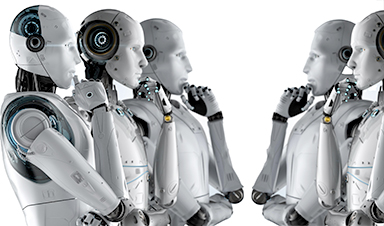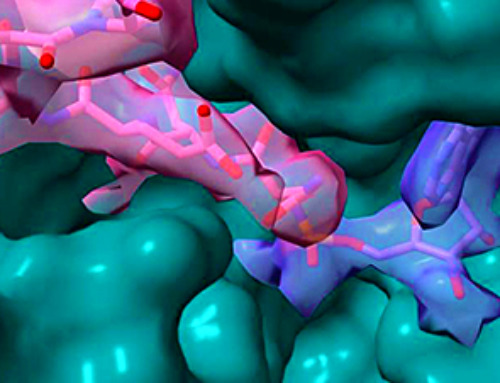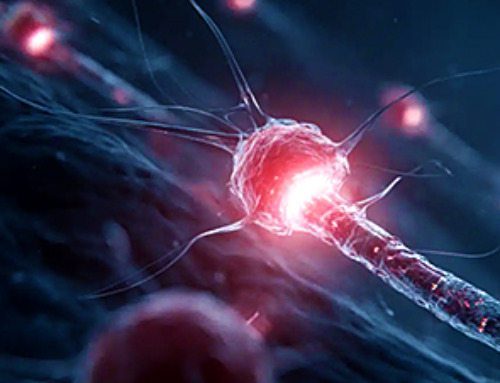Modern AI systems have fulfilled Turing’s vision of machines that learn and converse like humans, but challenges remain. A new paper highlights concerns about energy consumption and societal inequality while calling for more robust AI testing to ensure ethical and sustainable progress.
A perspective published on November 13 in Intelligent Computing, a Science Partner Journal, argues that modern artificial intelligence systems have fulfilled Alan Turing’s decades-old vision: machines capable of learning from experience and engaging in human-like conversations. Authored by Bernardo Gonçalves, a researcher affiliated with the University of São Paulo and the University of Cambridge, the paper examines the alignment between contemporary AI technologies and Turing’s ideas, while highlighting key differences.
The paper emphasizes how today’s transformer-based systems—despite their significant energy demands—contrast with Turing’s concept of machines developing intelligence naturally, akin to the learning process of human children. Gonçalves notes that transformers, which power current generative AI models, provide what Turing described as “adequate proof” of machine intelligence. Leveraging attention mechanisms and large-scale learning, these systems now excel in tasks traditionally associated with human cognition, such as generating coherent text, solving complex problems, and engaging in discussions about abstract concepts.
The Evolution of AI and Turing’s Influence
“Without resorting to preprogramming or special tricks, their intelligence grows as they learn from experience, and to ordinary people, they can appear human-like in conversation,” writes Gonçalves. “This means that they can pass the Turing test and that we are now living in one of many possible Turing futures where machines can pass for what they are not.”

This achievement traces back to Turing’s 1950 concept of the “imitation game,” in which a machine would attempt to mimic a human in a remote conversation, deceiving a non-expert judge. The test became a cornerstone of artificial intelligence research, with early AI pioneers John McCarthy and Claude Shannon considering it the “Turing definition of thinking” and Turing’s “strong criterion.” Popular culture, too, undeniably reflects Turing’s influence: the HAL-9000 computer in the Stanley Kubrick film 2001: A Space Odyssey famously passed the Turing test with ease.
However, the paper underscores that Turing’s ultimate goal was not simply to create machines that could trick humans into thinking they were intelligent. Instead, he envisioned “child machines” modeled on the natural development of the human brain—systems that would grow and learn over time, ultimately becoming powerful enough to have a meaningful impact on society and the natural world.
Challenges in Modern AI Development
The paper highlights concerns about current AI development. While Turing advocated for energy-efficient systems inspired by the natural development of the human brain, today’s AI systems consume massive amounts of computing power, raising sustainability concerns. Additionally, the paper draws attention to Turing’s ahead-of-his-time societal warnings. He cautioned that automation should affect all levels of society equally, not just displace lower-wage workers while benefiting only a small group of technology owners—an issue that resonates strongly with current debates about AI’s impact on employment and social inequality.
Looking ahead, the paper calls for Turing-like AI testing that would introduce machine adversaries and statistical protocols to address emerging challenges such as data contamination and poisoning. These more rigorous evaluation methods will ensure AI systems are tested in ways that reflect real-world complexities, aligning with Turing’s vision of sustainable and ethically guided machine intelligence.
Reference: “Passed the Turing Test: Living in Turing Futures” by Bernardo Gonçalves, 13 November 2024, Intelligent Computing.
DOI: 10.34133/icomputing.0102
News
Scientists Are Pretty Close to Replicating the First Thing That Ever Lived
For 400 million years, a leading hypothesis claims, Earth was an “RNA World,” meaning that life must’ve first replicated from RNA before the arrival of proteins and DNA. Unfortunately, scientists have failed to find [...]
Why ‘Peniaphobia’ Is Exploding Among Young People (And Why We Should Be Concerned)
An insidious illness is taking hold among a growing proportion of young people. Little known to the general public, peniaphobia—the fear of becoming poor—is gaining ground among teens and young adults. Discover the causes [...]
Team finds flawed data in recent study relevant to coronavirus antiviral development
The COVID pandemic illustrated how urgently we need antiviral medications capable of treating coronavirus infections. To aid this effort, researchers quickly homed in on part of SARS-CoV-2's molecular structure known as the NiRAN domain—an [...]
Drug-Coated Neural Implants Reduce Immune Rejection
Summary: A new study shows that coating neural prosthetic implants with the anti-inflammatory drug dexamethasone helps reduce the body’s immune response and scar tissue formation. This strategy enhances the long-term performance and stability of electrodes [...]
Scientists discover cancer-fighting bacteria that ‘soak up’ forever chemicals in the body
A family of healthy bacteria may help 'soak up' toxic forever chemicals in the body, warding off their cancerous effects. Forever chemicals, also known as PFAS (per- and polyfluoroalkyl substances), are toxic chemicals that [...]
Johns Hopkins Researchers Uncover a New Way To Kill Cancer Cells
A new study reveals that blocking ribosomal RNA production rewires cancer cell behavior and could help treat genetically unstable tumors. Researchers at the Johns Hopkins Kimmel Cancer Center and the Department of Radiation Oncology and Molecular [...]
AI matches doctors in mapping lung tumors for radiation therapy
In radiation therapy, precision can save lives. Oncologists must carefully map the size and location of a tumor before delivering high-dose radiation to destroy cancer cells while sparing healthy tissue. But this process, called [...]
Scientists Finally “See” Key Protein That Controls Inflammation
Researchers used advanced microscopy to uncover important protein structures. For the first time, two important protein structures in the human body are being visualized, thanks in part to cutting-edge technology at the University of [...]
AI tool detects 9 types of dementia from a single brain scan
Mayo Clinic researchers have developed a new artificial intelligence (AI) tool that helps clinicians identify brain activity patterns linked to nine types of dementia, including Alzheimer's disease, using a single, widely available scan—a transformative [...]
Is plastic packaging putting more than just food on your plate?
New research reveals that common food packaging and utensils can shed microscopic plastics into our food, prompting urgent calls for stricter testing and updated regulations to protect public health. Beyond microplastics: The analysis intentionally [...]
Aging Spreads Through the Bloodstream
Summary: New research reveals that aging isn’t just a local cellular process—it can spread throughout the body via the bloodstream. A redox-sensitive protein called ReHMGB1, secreted by senescent cells, was found to trigger aging features [...]
AI and nanomedicine find rare biomarkers for prostrate cancer and atherosclerosis
Imagine a stadium packed with 75,000 fans, all wearing green and white jerseys—except one person in a solid green shirt. Finding that person would be tough. That's how hard it is for scientists to [...]
Are Pesticides Breeding the Next Pandemic? Experts Warn of Fungal Superbugs
Fungicides used in agriculture have been linked to an increase in resistance to antifungal drugs in both humans and animals. Fungal infections are on the rise, and two UC Davis infectious disease experts, Dr. George Thompson [...]
Scientists Crack the 500-Million-Year-Old Code That Controls Your Immune System
A collaborative team from Penn Medicine and Penn Engineering has uncovered the mathematical principles behind a 500-million-year-old protein network that determines whether foreign materials are recognized as friend or foe. How does your body [...]
Team discovers how tiny parts of cells stay organized, new insights for blocking cancer growth
A team of international researchers led by scientists at City of Hope provides the most thorough account yet of an elusive target for cancer treatment. Published in Science Advances, the study suggests a complex signaling [...]
Nanomaterials in Ophthalmology: A Review
Eye diseases are becoming more common. In 2020, over 250 million people had mild vision problems, and 295 million experienced moderate to severe ocular conditions. In response, researchers are turning to nanotechnology and nanomaterials—tools that are transforming [...]





















